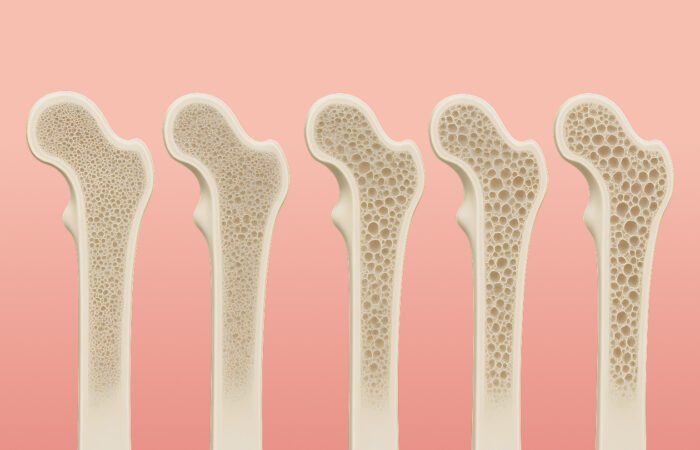
Vaginal dryness is a topic few feel comfortable discussing. It’s intimate, deeply personal, and often distressing. Yet, it remains quite common, affecting over 50% of menopausal women. As estrogen levels decline, the vaginal tissues can become thinner and drier. This fragile tissue often leads to discomfort during everyday activities and intimacy alike.
Despite its prevalence, around 70% of women with symptoms of genitourinary syndrome of menopause (GSM)—which includes vaginal dryness—don’t raise the issue with a healthcare provider. Many feel embarrassed or assume these changes are simply an inevitable part of aging.
But here’s the truth: there are safe, effective, and well-researched ways to relieve these very real symptoms. In this article, we’ll explore what causes vaginal dryness and what truly helps, from simple lifestyle adjustments to medical treatments.
What is vaginal atrophy or GSM?
Vaginal dryness is usually the first sign of a condition once called vaginal atrophy, now more broadly known as genitourinary syndrome of menopause (GSM). This updated term captures both vaginal and urinary symptoms that are linked to low estrogen. Studies suggest up to 84% of women with GSM report vaginal dryness.
Estrogen helps maintain the thickness, elasticity, and natural moisture of vaginal tissue. When levels drop, changes may include:
- Thinning of the vaginal lining
- Decreased lubrication
- Narrowing or shortening of the vaginal canal
- Shifts in the vaginal microbiome
These changes can make the area more prone to irritation, inflammation, and pain, resulting in countless vaginal and urinary symptoms.
What symptoms are associated with GSM?
Vaginal symptoms
- Vaginal dryness
- Pain during sex (Dyspareunia)
- Spotting or bleeding, oftentimes during sexual intercourse
- Itching and/or burning in your vagina
- Vaginal or vulvar itching
- Unusual vaginal discharge
Urinary symptoms
- Increased risk of urinary tract infections (UTIs)
- More frequent or painful urination (dysuria)
- Inability to retain urine (urinary incontinence)
- Burning sensation during urination
- Blood in your urine (hematuria)
This condition most commonly occurs during perimenopause and menopause when your ovaries produce less estrogen. Additionally, GMS can also affect women whose estrogen levels decline due to other factors, including: cancer treatment, ovary removal, or from breastfeeding. Studies suggest some medications with antiestrogen properties (used in some cancer treatments), some birth control pills, and smoking cigarettes can decrease estrogen and lead to vaginal atrophy.
These symptoms often extend beyond intimacy. Many women experience discomfort while sitting, exercising, or during daily activities; all of which can significantly affect quality of life. Left unaddressed, vaginal dryness may lead to avoidance of intimacy, emotional distress, and a decline in self-confidence. Fortunately, with a wide range of treatment options available, relief is possible.
Evidence-based treatment options
There is no one-size-fits-all approach to vaginal dryness. A range of treatments, both hormonal and non-hormonal, may offer relief, and many women find that a combination of strategies works best.
Non-Hormonal Options
Often considered the first line of treatment for vaginal atrophy, vaginal moisturizers and lubricants are favourable options for women seeking non-hormonal and non-prescription treatments.
- Vaginal moisturizers are applied several times a week to gradually hydrate and maintain the vaginal lining. Regular use supports lasting moisture in the vaginal mucosa. Look for products that are fragrance-free, pH-balanced, and vaginal-specific. Moisturizers with hyaluronic acid have shown promising results, sometimes comparable to low-dose estrogen.
- Lubricants provide short-term relief during sexual activity. Look for water-based, fragrance-free lubricants.
Lifestyle changes and at-home support
- Diet and hydration: A balanced diet rich in omega-3s and antioxidants, along with adequate hydration, supports overall tissue health.
- Omega-3s are readily found in fatty fish like salmon, mackerel, and tuna along with plant-based sources like chia seeds, flax seeds, and walnuts.
- Antioxidant-rich foods include berries, leafy greens, nuts and seeds, and even dark chocolate.
- Pelvic floor exercises: Kegel exercises are a simple, effective way to improve blood flow and strengthen vaginal muscle tone—key for bladder control, pelvic support, and sexual function. You can do them anytime, anywhere. You may find Kegel exercises beneficial if you experience: stress, urge, and/or fecal incontinence. However, they may be less effective for women who experience significant urine leakage or overflow incontinence. Before beginning Kegel exercises, it’s advisable to consult with your healthcare profession to determine if they are suitable for you.
- Avoid irritants and prioritize airflow: For example, avoid perfumed soaps or tight clothing to reduce local irritation. Opt for mild, fragrance-free soaps and warm water and remember to limit your washing to the vulva (external genitalia). When choosing underwear, look for natural, breathable fabrics like cotton.
- Vaginal dilators: Vaginal dilators are utilized to gently widen the vaginal canal, enhancing comfort during sexual intercourse and helping to maintain elasticity in women experiencing vaginal narrowing or discomfort.
- Natural supplements: Soy isoflavones and flaxseed have helped some women find relief. While research is mixed, some women may find relief when using them, as an alternative in helping balance estrogen levels.
Hormonal treatment options
When symptoms persist or substantially impact quality of life, various Health Canada-approved low-dose vaginal estrogen products are available, including estrogen gel, tablets/capsules, and rings. A prescription from a medical provider is necessary to evaluate the specific benefits and assess any potential risk factors.
It is crucial to note that if self-care strategies do not sufficiently alleviate symptoms, or if symptoms such as bleeding, unusual discharge, or persistent pain occur, consulting a healthcare provider is imperative. A comprehensive evaluation can help rule out other underlying causes and identify the most effective treatment approaches.
Remember, you are not alone. Better yet, you do not have to suffer in silence.
Physical symptoms often intersect with emotional and relational health. Open communication with a partner or healthcare provider can ease stress, strengthen intimacy, and lead to better outcomes. Acknowledging these symptoms as genuine medical concerns rather than simply a part of the aging process is an empowering first step toward embracing your health and well-being.
Using clear, accurate terms like “vagina” and “vulva” helps challenge the silence and stigma many of us grew up with. It’s normal to feel some discomfort, but here, open, confident conversations are not just welcome, they’re encouraged.
If dryness is affecting your daily life, relationships, or sexual health, speak up. Support is available, and relief is within reach. Every woman’s experience with perimenopause and menopause is different and so is the solution that works best for you.
Disclaimer: The information provided here is for informational purposes only. It is not intended as medical advice. Always consult with your doctor or healthcare provider to determine what is best for your individual health needs.
References:
- Mark, S. Samsudin, I. Looi, Yuen KH. Vaginal dryness: a review of current understanding and management strategies. Climacteric. Published online February 6, 2024:1-9. doi:https://doi.org/10.1080/13697137.2024.2306892
- Cleveland Clinic. Vaginal atrophy (atrophic vaginitis): Symptoms & treatment. Cleveland Clinic. Published 2023. https://my.clevelandclinic.org/health/diseases/15500-vaginal-atrophy
- Stute P. Is vaginal hyaluronic acid as effective as vaginal estriol for vaginal dryness relief? Archives of Gynecology and Obstetrics. 2013;288(6):1199-1201. doi:https://doi.org/10.1007/s00404-013-3068-5
- Pelvic Floor Muscles: Anatomy, Function & Conditions. Cleveland Clinic. Published April 13, 2022. https://my.clevelandclinic.org/health/body/22729-pelvic-floor-muscles
- Gómez-Zorita S, González-Arceo M, Fernández-Quintela A, Eseberri I, Trepiana J, Portillo MP. Scientific Evidence Supporting the Beneficial Effects of Isoflavones on Human Health. Nutrients. 2020;12(12):3853. doi:https://doi.org/10.3390/nu12123853




